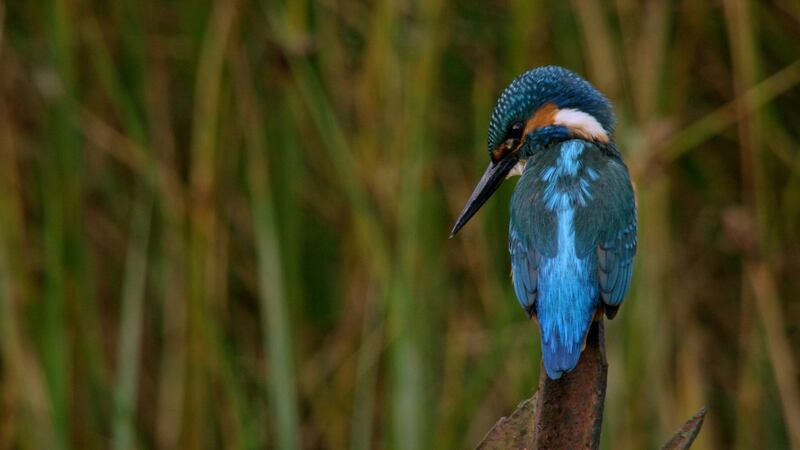Sometimes it’s the small things that bring the most joy. It may be a chance meeting with a friend, a joke shared with a colleague or an unexpected encounter with the natural world: a striking sunset while travelling home from work, a flock of birds passing over your house or a fox crossing the road at dusk.
The producers of Wild Cities, a new series on RTÉ One, want us to cherish these encounters with the natural world. "I'd like to get away from the idea that nature is somewhere else; that you have to travel to see it, and to encourage people to look at what's there. We live with wildlife in our gardens, on our streets and around our workplaces," says Cepa Giblin of Crossing the Line, which has made the programme.
The four-part series – the first episode is on RTÉ One on Sunday, at 6.30pm – looks at the way birds and animals have made their homes in our cities, sometimes right under our noses. But we often ignore them. “These are clever, tenacious, opportunistic animals, such as the urban fox, herring gulls, Irish hares, otters and seals, who have found a niche in our most densely populated cities,” says Giblin.


Wild Cities shows viewers how these animals have created habitats in abandoned industrial buildings, along canals, in airport car parks and in ruined castles. Each episode looks at a different city – Galway, Dublin, Cork and Belfast – drawing us up close to their secret worlds in our midst.
Take the long-term car park at Dublin airport that has become home to a large population of Irish hares. "There are often people passing through, so predators avoid it," says Rob Gandola, the zoologist who presents the Wild Cities episode on Dublin. In the city, he says, a million people "live within 300m of green space, and the biggest benefit of nature to people in cities is to destress."
Phoenix Park, which covers more than 700 hectares, is a haven for wildlife; Wild Cities captures footage of fallow deer before and during the rutting season, in October.
Gandola tells us that lizards are Ireland’s only native reptile as he takes the tiny creatures up in his hands on Howth Head, overlooking Dublin Bay. He feeds the seals at Dún Laoghaire harbour and walks among the brent geese on the Dublin Port quayside, pointing out that 90 per cent of the global population overwinter here.
“Humans aren’t separate from the natural world: we are a part of it. And we feel better when we’re back part of it,” says Gandola.
In the Wild Cites on Galway, John Lusby, a Birdwatch Ireland conservation officer, draws the viewers into a quieter, slower exploration of nature on the city canal and in the ruins of Menlough Castle, just outside Galway city.
“The otters are hidden yet in plain sight. We are often disconnected from the natural world, but if you open your eyes and let yourself be drawn into that world . . .” Lusby says as he rows down the peaceful canal, just metres from busy streets.
Infrared cameras allow viewers to get very close to the barn owls in Menlough Castle as Lusby observes them from a safe distance.
Back in the city we see starlings flock on to a radio mast and then bed down for the night in the folds of Virginia creeper and ivy on the buildings of Eyre Square. “Most people are oblivious to the noise they create,” says Lusby, who is visibly charmed by the aerial performance.
Each episode also talks to locals with a particular fondness for specific wild animals. A man in Rialto, in Dublin, breeds frogs in his back garden; another elsewhere in south Dublin feeds and looks after wild urban foxes.
In Galway we meet a fisherman and see salmon leap on the River Corrib. And in Belfast there is a family who feeds badgers. “These human stories bring the strongest message,” says Giblin. “It’s about people who enjoy contact with nature. It’s not about knowing all the [taxonomic] names. It’s about appreciating the interaction with the animals and birds.”
Tara Shine, an environmental scientist, presents the episode on Cork, where she is based. “Most people now live in cities and towns, and most of our children grow up in an urban environment. Programmes like these can help them to discover the nature on their doorstep and learn about the natural world and their place in it.”
The biologist, writer, comedian and TV presenter Simon Watt presents the episode on Belfast. “We may think that we entirely control our urban environments, but there is always life in the cracks,” he says. “It’s the complexity of the ecosystems and the number of species that I found surprising and astonishing in the heart of our busiest urban areas.” Watt met his first live badger during the shoot.
Natural-history film-making doesn’t attract huge audiences, but it has a steady following, according to Giblin. It also takes much longer than many other types of film-making, as the production team follows the natural cycle, whether for nesting or migratory birds or spawning salmon.
It also takes a long time to capture the more spectacular scenes. The Wild Cities cameraman Domenico Pontillo spent hours over several weeks waiting in all weather to film kingfishers in Belfast.
It’s worth all the effort, especially if you can make younger viewers enthusiastic about what they’re watching. “It’s important that our children engage with nature,” says Giblin, “because if you’re aware of and interested in nature at a young age then you will be as an adult.”
Wild Cities starts on RTÉ One on Sunday at 6.30pm, with its programme on Galway, followed each week by programmes on Dublin, Cork and Belfast
















